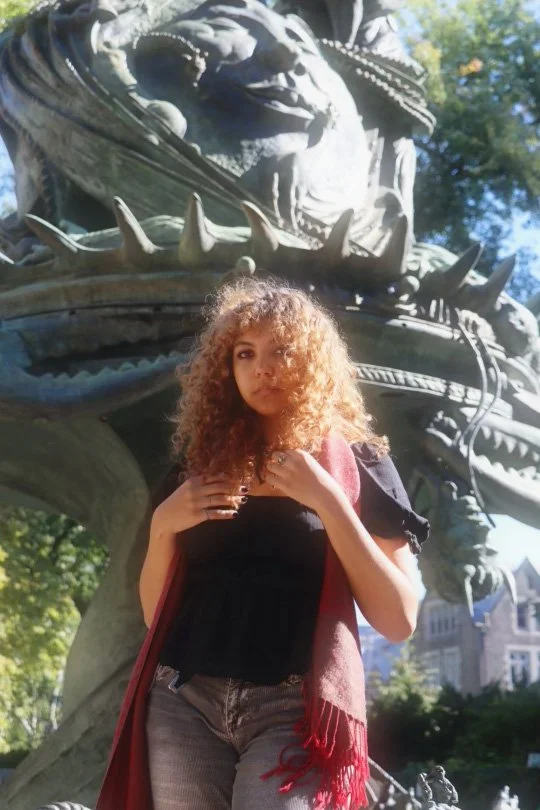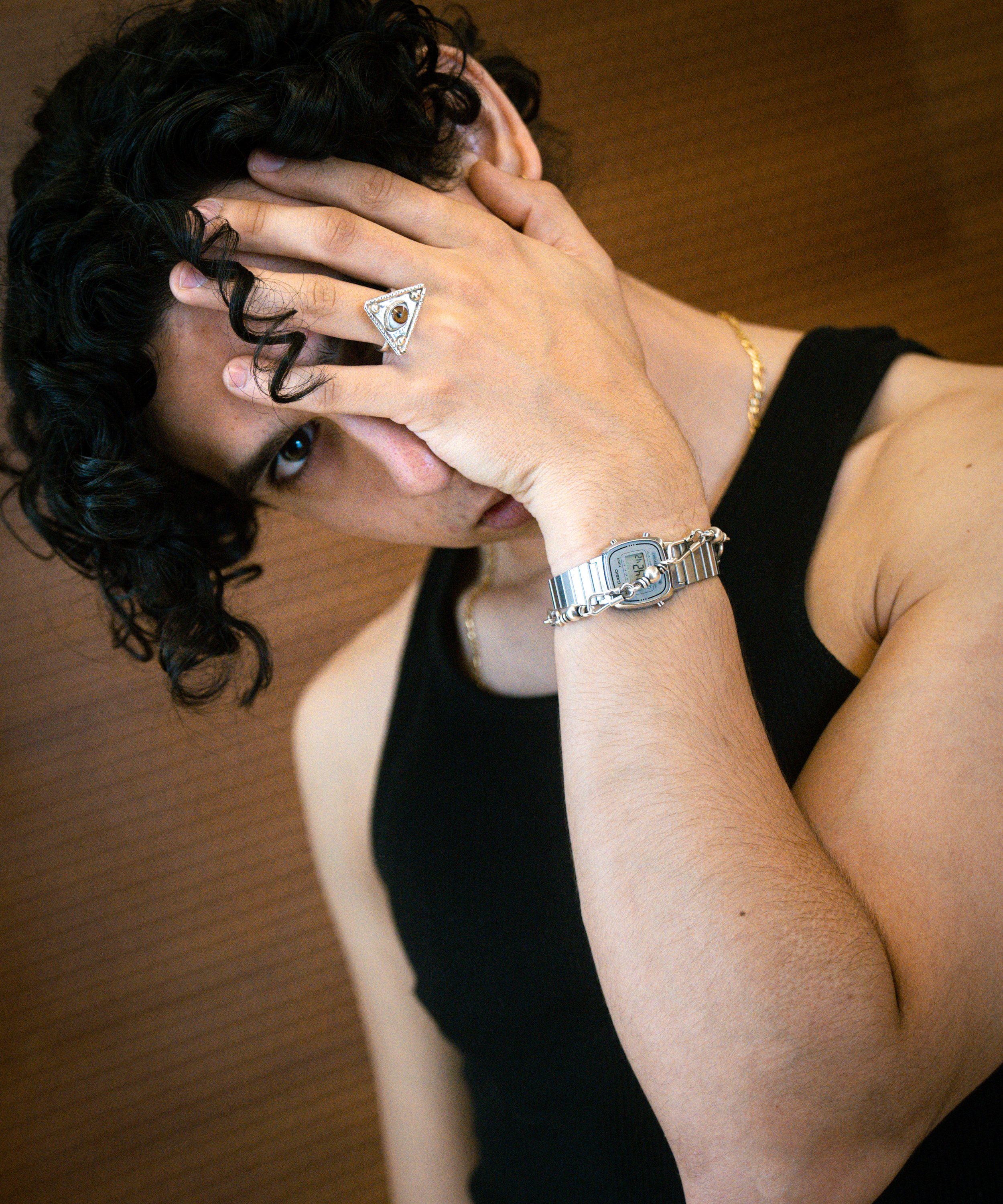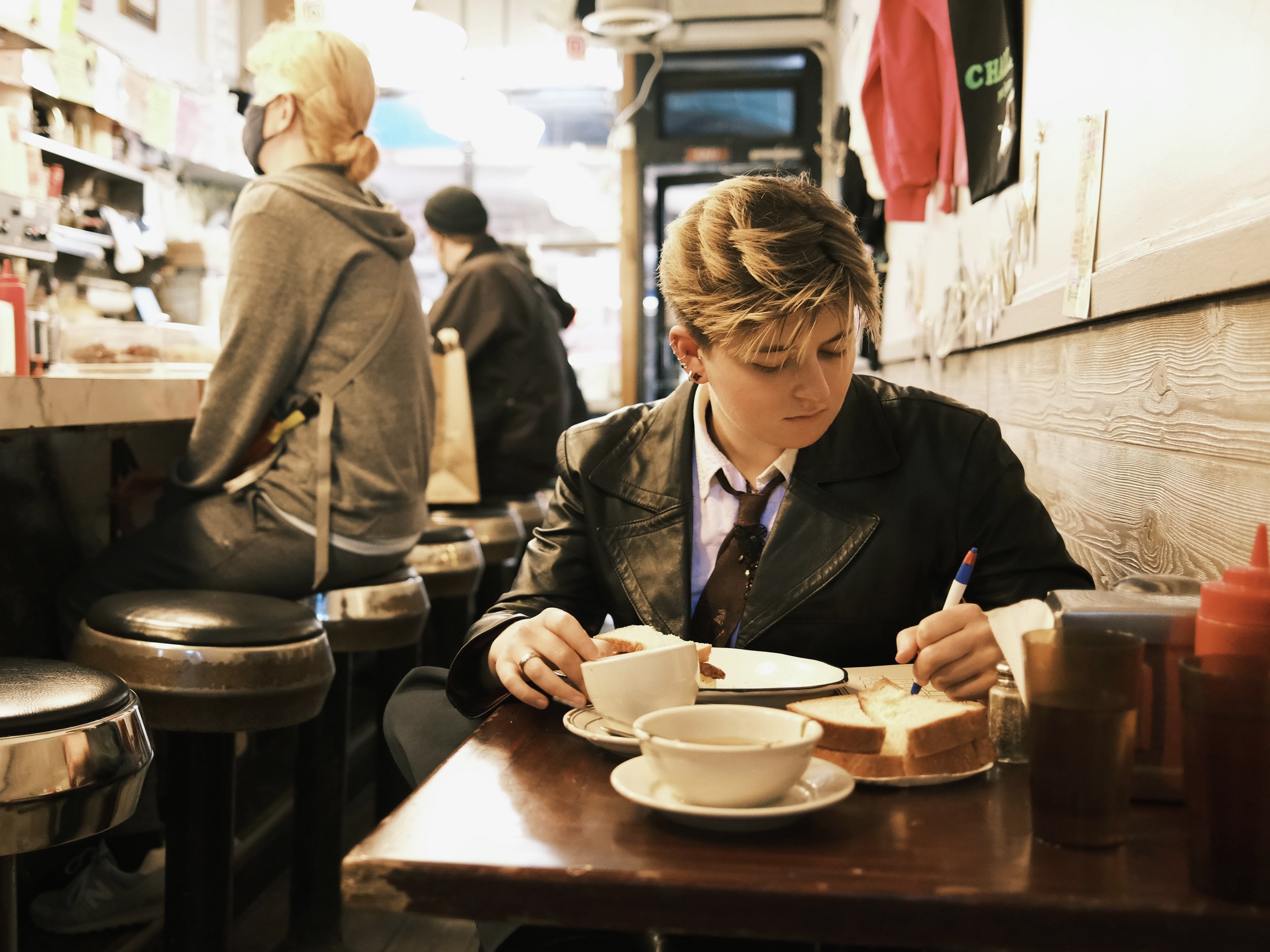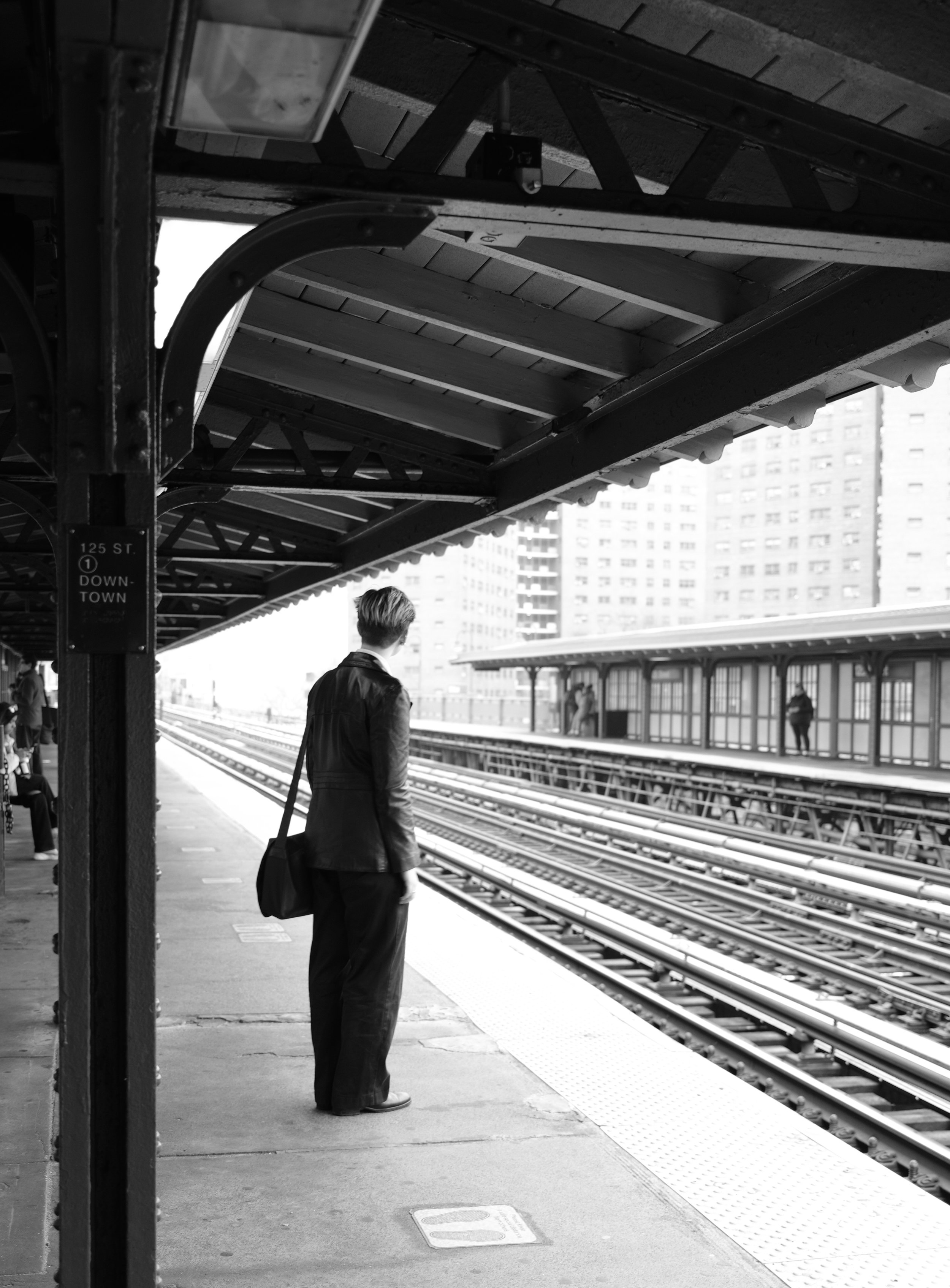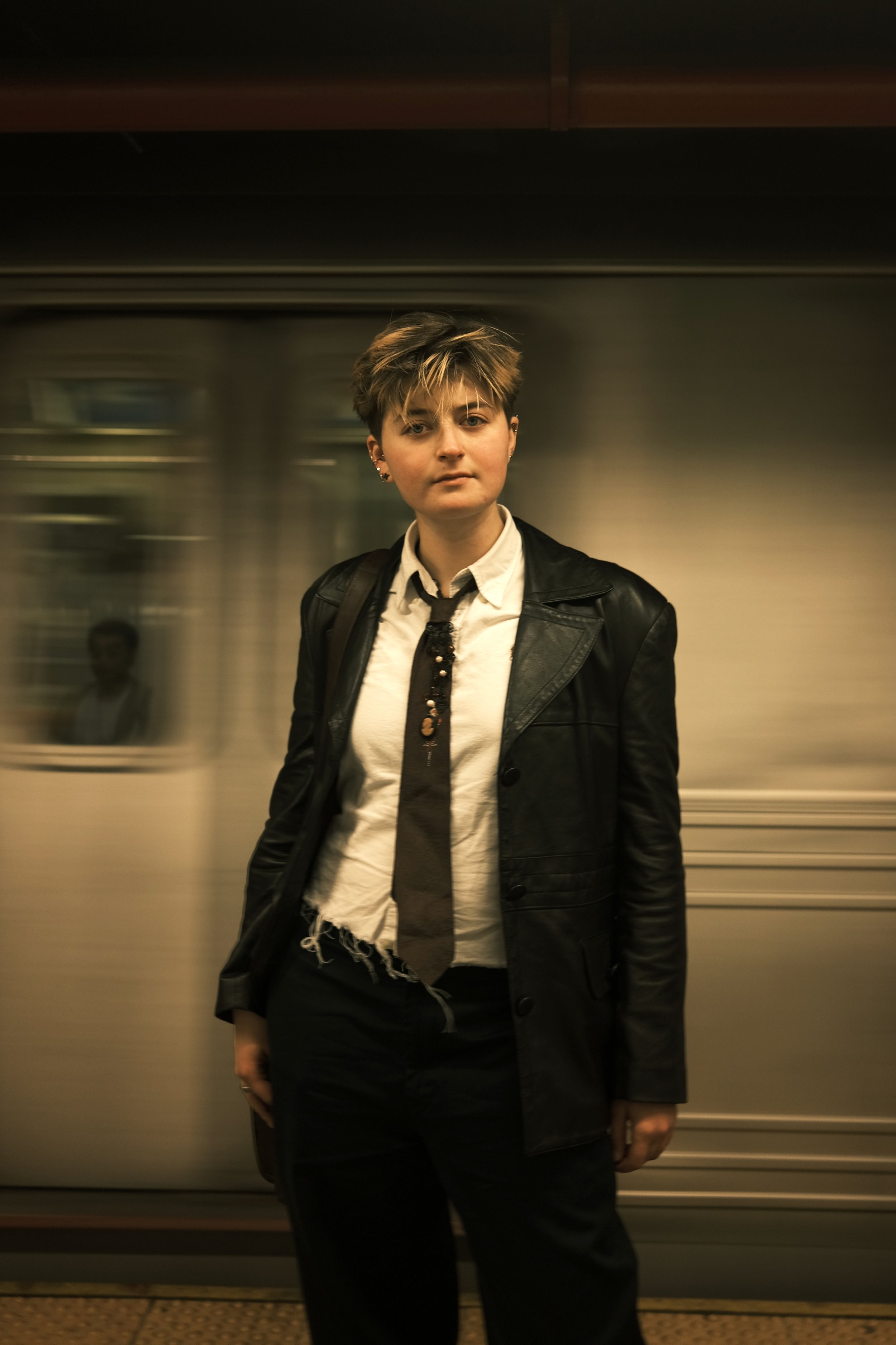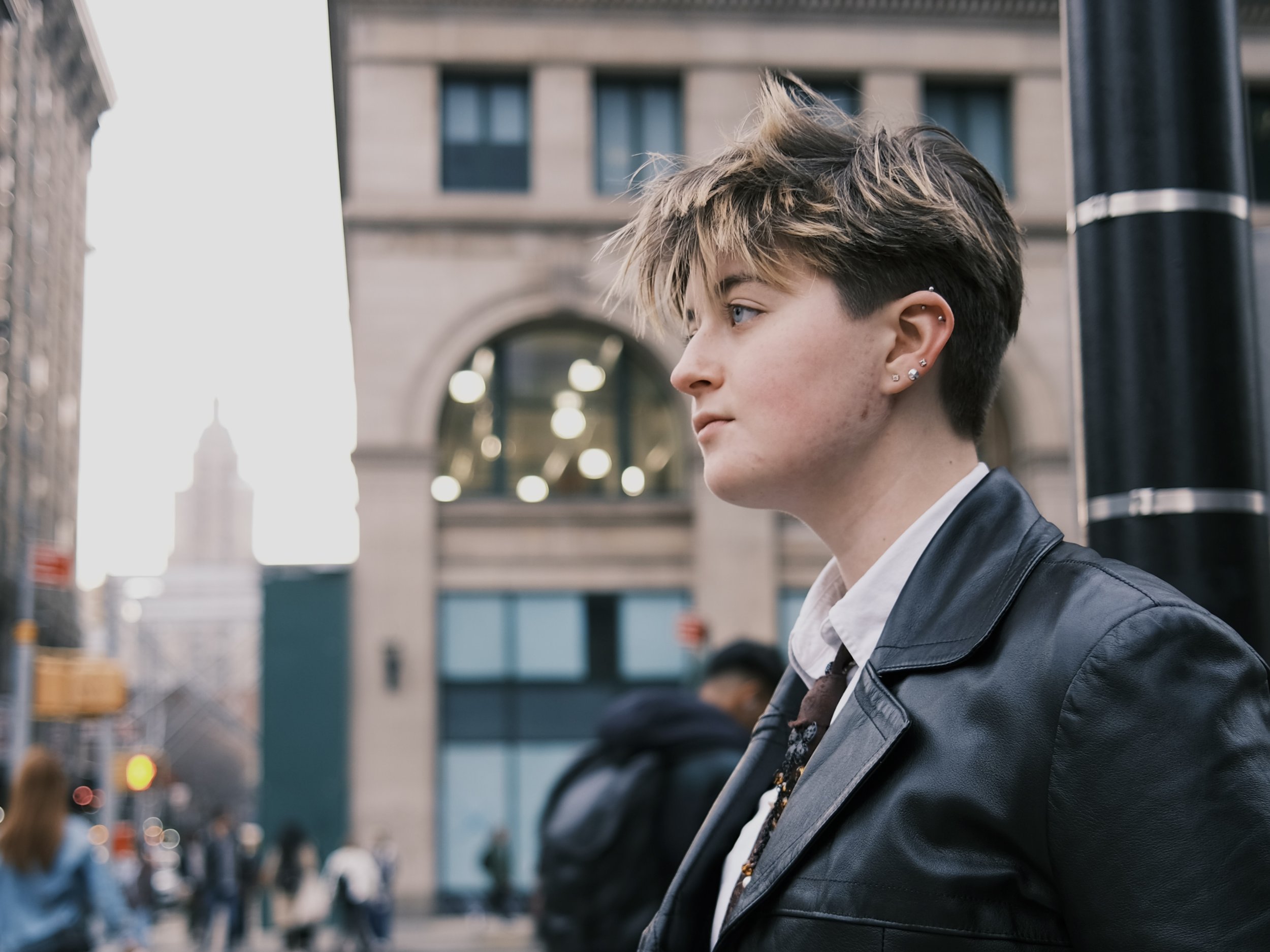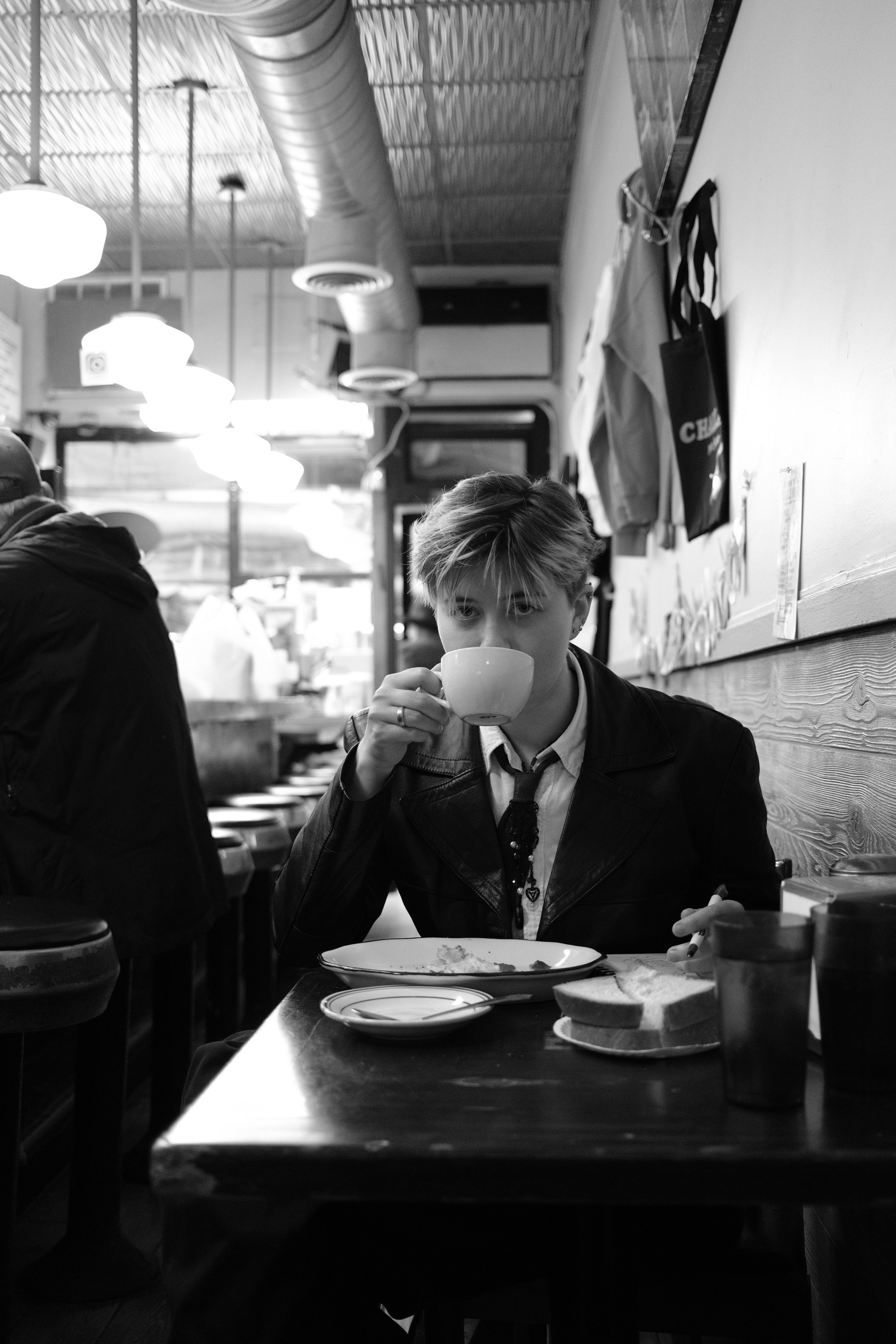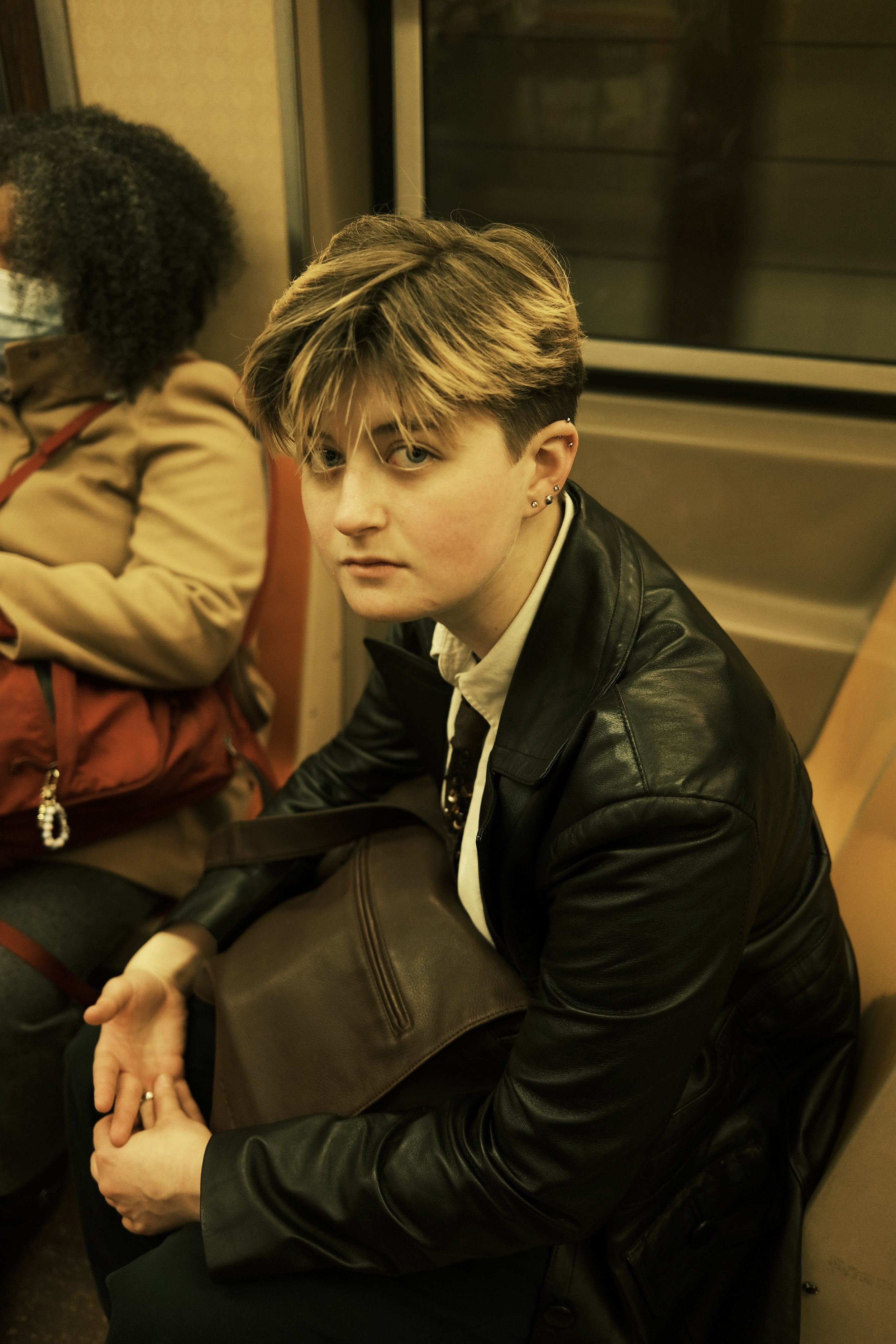Feature by Sahai John
Photos by Sungyoon Lim
Victoria Reshetnikov is a junior at Columbia College studying art history and visual arts. She is a multimedia artist born and raised in Queens, NY. Through her creative use of architectural sculptures, isometric prints and imaginative sketches, Victoria explores ideas of home and trauma. Victoria and I met in the Columbia print shop to discuss housing displacement, thrift culture, and what it means to continuously occupy an interior when living in New York City.
When did you first start creating art?
In kindergarten I got my first sketchbook. It's been a mainstay ever since. I really can't imagine my life without it. Growing up I was sort of the village babysitter. I made comic books and exquisite corpses with the kids.
I was always drawing in middle school, but in high school I started getting more into my studies and became more anxious which meant I had less time to do art. I came into this school wanting to pursue academics more, and now I've bounced back into visual arts, and I'm trying to embrace it. I'll see where it takes me.
Where do you draw the majority of your inspiration from?
I am trying to exist in spaces with a lot of clarity now by being more aware of my surroundings. My work has been very architectural recently and the inspiration, because of that, is all around us.
How does living in New York City influence your work?
Becoming an adult in New York has been really stressful recently. As I’m facing graduating and losing the structure of school to frame my life, the housing crisis in New York is becoming much closer to me and feels more absurd. I’ve been very aware of it in the last few years, but I think there’s always been this sense of change in my life. The neighborhoods and places I occupy have been morphing and actively changing. I've embraced this change in my work recently.
I’ve been thinking about Flushing and Long Island City where they now have these circles of glass around the areas. It angers me so much. There's a lot of nostalgia tied to these places for me. But it's so much more than that because gentrification is upending entire lives and homes. I critique it in my work by thinking about the language of urban displacement through architectural plans and isometric drawings.
In a recent project, I used a lot of isometric perspective because those are the plans that we see on the sides of development projects where you have this image of the future home being presented in a super graphic, linear form. I was also thinking about gentrification in that project as something that occurs over time. And I was trying to equate it with the growth of mold and other organic growth, something that is also an agent of time. The project is juxtaposing the way that buildings and the city change to natural growth processes.
How has Columbia influenced your art career?
Last spring semester was so inspiring. I took a scientific illustration class and a class on zines.
I took the scientific illustration class, because I wanted to learn technical skills related to illustration. I left the classroom with a whole different view of everything. I started thinking on a smaller scale about homes and architecture. This semester, all of my classes are Interplay. It’s all really informing my practice, which I love.
Does your work center more often around other subjects? Or yourself?
Every art practice is person-centric. I've been thinking about the house, the home, and the city as indicative of the individual; how our personhood manifests in physical space. My work has geared toward this and the way that objects, things, and items can paint a portrait of other people.
I created a Zine last year that includes an illustration of a thrift store and the way that it fashions identity. I see the second-hand store as an inherently queer space. It forms identity just by existing. There's a lot of creative liberty in the second hand, which I've been interested in.
What artists inspire you and influence your work?
Martha Rosler had an installation piece at the MoMA. She set up this thrift store in a gallery and people would come and buy things. She would be there for the duration of the show, bartering with people, it was so cool. That inspired my zine and the illustration of a thrift store.
I also love Pierre Huyghe. He created this amazing installation called After A Life Ahead where he took an abandoned ice skating rink and dug out caverns in the floor, creating a topographical landscape in which he put streams, rivers and different plant life that would grow over the course of the exhibition. It was super weird and amazing. That also influenced my interest in the changing environments around us which I explore in my work.
How do you think your work has shifted as you've evolved as an artist?
The work that I did in high school was super different from what I'm doing now. I went to a school that had a wonderful art program. But I’m relieved that it wasn't an art high school. My school had a very cobbling art environment where we just made art for the sake of making art.
The only conceptual things that I remember really thinking about in high school were my drawings of goats. I latched on to that image because I attached symbolism to them. In college, I became more figural. I was interested in the idea of women in art history and the nude. I was thinking about very physical bodies and made a painting and some prints incorporating that. And then I got really bored and I almost did a 180. I have done almost exclusively buildings now and I hope that I keep going. I hope that I don't lose interest in this because I have way more to say.
You incorporate many images of houses and articles of domesticity in your work. How is your relationship to your home and the concept of home expressed in your current portfolio?
We moved from one neighborhood to another neighborhood in Queens when I was around eight years old. So we've only been in my house for about ten years, and my parents came to the United States from the Soviet Union in the 90s, so there's no intergenerational home space for me in the way that a lot of my friends have. My parents are also planning to leave New York next year when my sister goes to college. I've been thinking about that anxiety as well, trying to rationalize this space that has been my home for a decade and is now going to be obsolete to me. But it's also a space that never really meant that much to me because it's not a generational space.
That idea has informed my work recently. In a recent project of mine, I used a wood panel to paint a brownstone apartment on the front and an interior space on the underside with furniture and people. I've been thinking about detaching myself from the home, and thinking about it as a separate structure that I use, and not so much an interior that I occupy. I'm interested in what that connection between the home and the house means, and how we construct what the spaces we're in mean to us.
In what ways do you portray trauma in your art?
Because there's so much architectural space in New York City we occupy a series of interiors throughout our lives here. We're either in the home, our workplace, or school. I feel like I'm always inside and the inside hides a lot of things. The house represents both a facade and an architectural space. I had a lot of bad experiences over winter break that particularly colored that for me. I felt very suffocated at that time. Since I felt like I was always in this interior where bad things would happen to me, there was almost no escape from the interior. Those spaces then became colored with that trauma.
This, too, shall pass
A project that I'm working on now is very influenced by that. My dad was a dentist and had an office that I recently passed by. I thought it had been bought out and closed for a long time because he died when I was in middle school, but I saw that the mailbox still said dentist office and I looked inside and it was exactly as I remembered it from over ten years ago. It freaked me out because I looked in there and it was empty and dusty but all of the rooms were in the same configuration. So I took a picture of the windows of the dentist office and I'm going to screen print those onto a house I'm creating. Trauma in an interior is very subtle in my work because I view it as hidden.
A lot of your pieces involve architectural sketches and prints. How do these exterior presentations of structures juxtapose this concept of the power of the interior?
I've been thinking about exteriors as the overall city projects, and the interior as more specific to myself. But that's definitely a next step for me, conjoining. I'm thinking about these very hyper specific, individual pieces like the dentist office and different parts of Queens that I've grown up in, and then incorporating the interior. I'm planning to include architectural drawings juxtaposed with rooms and other interior spaces.
I feel like the city itself is an interior. I feel like I'm in a bubble here, and maybe that's because New York City is such a liberal and unique place in the United States. I've been reading about the anti-trans bills that have been passed within the last few weeks. There's always been this sense of relief from the idea that it's not going to affect me or anyone I know; that separation is very dangerous. It also characterizes the city as an interior that's not affected by a lot of the things that are happening in the rest of the country. It's very troubling.
Where do you hope to go with your artwork in the future?
I want to go bigger. It's really easy to make small work. I can make more a lot faster and it's more gratifying for me than having one thing over the course of two months. But I would really like to have the facilities to work on a bigger scale. I like the idea of expanding what I already have. And I’m trying to make my practice more specific and research oriented.
There's an impression that artists are active gentrifiers of neighborhoods, because of their presence. Artists will go to a neighborhood and the money will follow and then artists will leave and the money will keep following them.
There's often a tense relationship between the arts and local communities in parts of New York City. I want to address that in my work more actively, and think about it not as someone that's encroaching on a place, but part of it. That's the key, becoming an artist that is actively participating in the community and allowing their work to represent that community accurately and interestingly.
Where can we find more of your work?
My Instagram @vilinda.a and my website!


























